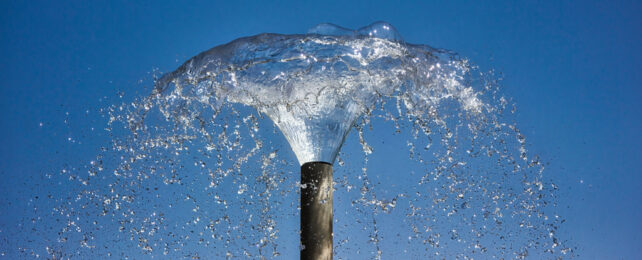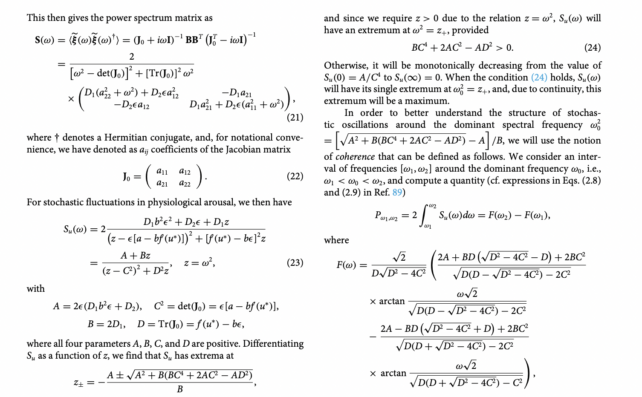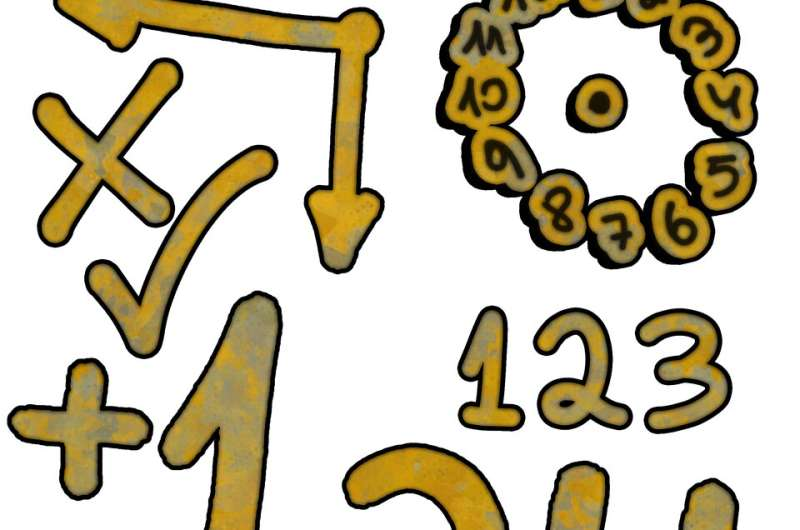
For the first time, a team of mathematicians has developed a model that can map the best way for those with penises to reach sexual climax.
After combing through decades of data on both physiological and psychological arousal, the researchers say they've found the ideal conditions required to achieve orgasm.
"We have developed the first successful mathematical model of sexual performance," says mathematician Konstantin Blyuss, one of the lead researchers from the University of Sussex in the UK.
"Our results cover the physiological and psychological aspects required to reach climax. They reinforce, and mathematically prove, existing studies into the psychology of sex."
Of course, there is no one-size-fits-all when it comes to sex and sexual satisfaction, so take this with a grain of salt. The researchers aren't guaranteeing an orgasm for everyone every time.
Instead, they just hope to skew the odds a little more in one's favor based on data.
The formulae themselves are actually pretty intense mathematical stuff that won't be a great help in the heat of the moment. (The research was inspired by the use of mathematics to improve sports performance, but it does not involve thinking about baseball.)But the researchers did come up with one important takeaway message: Too much psychological arousal early on can make it harder to reach orgasm.
"A key finding is that too much psychological arousal early in the process can inhibit the chance of reaching climax," says Blyuss.
"Simply put, our findings can be summarized as 'Don't overthink it.'"
More importantly, the team has been able to do what others haven't – find a way to use mathematical models to predict whether someone will reach climax.
Of course, the elephant in the room here is why the researchers looked at human males, who usually find it much easier to climax than others.
But many of them also experience sexual dysfunction at some point in their lives, and they tend to have a much simpler arousal cycle, so it was the best starting point for researchers to create these equations.
"Our findings shed light on a socially taboo subject, which we believe could have useful applications for the clinical treatment of sexual dysfunction," said mathematician and co-researcher Yuliya Kyrychko, also from the University of Sussex.
"With what we have learned from this study, we intend to mathematically model the female sexual response, which is physiologically – and mathematically – more complex than the male response."
The researchers developed the equations by analyzing data around the four stages of the male arousal cycle: excitation, plateau, orgasm, and resolution.
One of the main studies they looked at was the iconic 1966 study behind the Masters-Johnson theory of sexual response cycle, which included data from 10,000 sexual acts performed in the lab between 382 women and 312 men.
The team then compared their results with research from the Netherlands that dates back to 2006.
In these studies, researchers put consenting participants in fMRI machines and monitored their neurological changes as they performed sexual acts and reached climax.
The model also took into account research on phenomena such as spontaneous arousal during the day, the responses of males with spinal cord injuries, and 'wet dreams'.
Looking at all of this data, researchers came up with two different mathematical equations – one dealing with the psychological factors involved and one dealing with the physiological side of things.
As mentioned above, these formulae aren't really something you can plug in and use in the bedroom. You can see some of the calculations in the paper below.

A screenshot from the paper. (Blyussa & Kyrychko, Chaos, 2023)
But they are there to map the conditions that would lead an arousal cycle to end in orgasm – or not. This could help researchers better understand sexual problems in the future.
Because every single person's sexual activity involves such different stimuli, the team had to use what's known as 'stochasticity'. Basically, it's the phenomena of randomness that can be statistically analyzed.
"We are able to find optimal stochastic escape paths that show how a sexual response progresses toward an orgasm under the influence of small stochastic perturbations," Blyussa and Kyrychko write.
Now that we've been able to quantify and model the elusive orgasm, we're looking forward to math helping all of us get a little closer to satisfaction.
The research has been published in Chaos: An Interdisciplinary Journal of Nonlinear Science.
3rd Edition of International Conference on Mathematics and Optimization Methods
Website Link:https://maths-conferences.sciencefather.com/
Award Nomination: https://x-i.me/XU6E
Instagram: https://www.instagram.com/maths98574/
Tumblr: https://www.tumblr.com/maths2588
Twitter: https://twitter.com/AnisaAn63544725
Blogger: https://www.blogger.com/u/2/blog/posts/2122876331378747107?pli=1#create
Pinterest: https://in.pinterest.com/maxconference20022/
#maths #numericals #algebra #analysis #analysis #mathmatics #numericals #number #complex #graphics #graphs

No comments:
Post a Comment